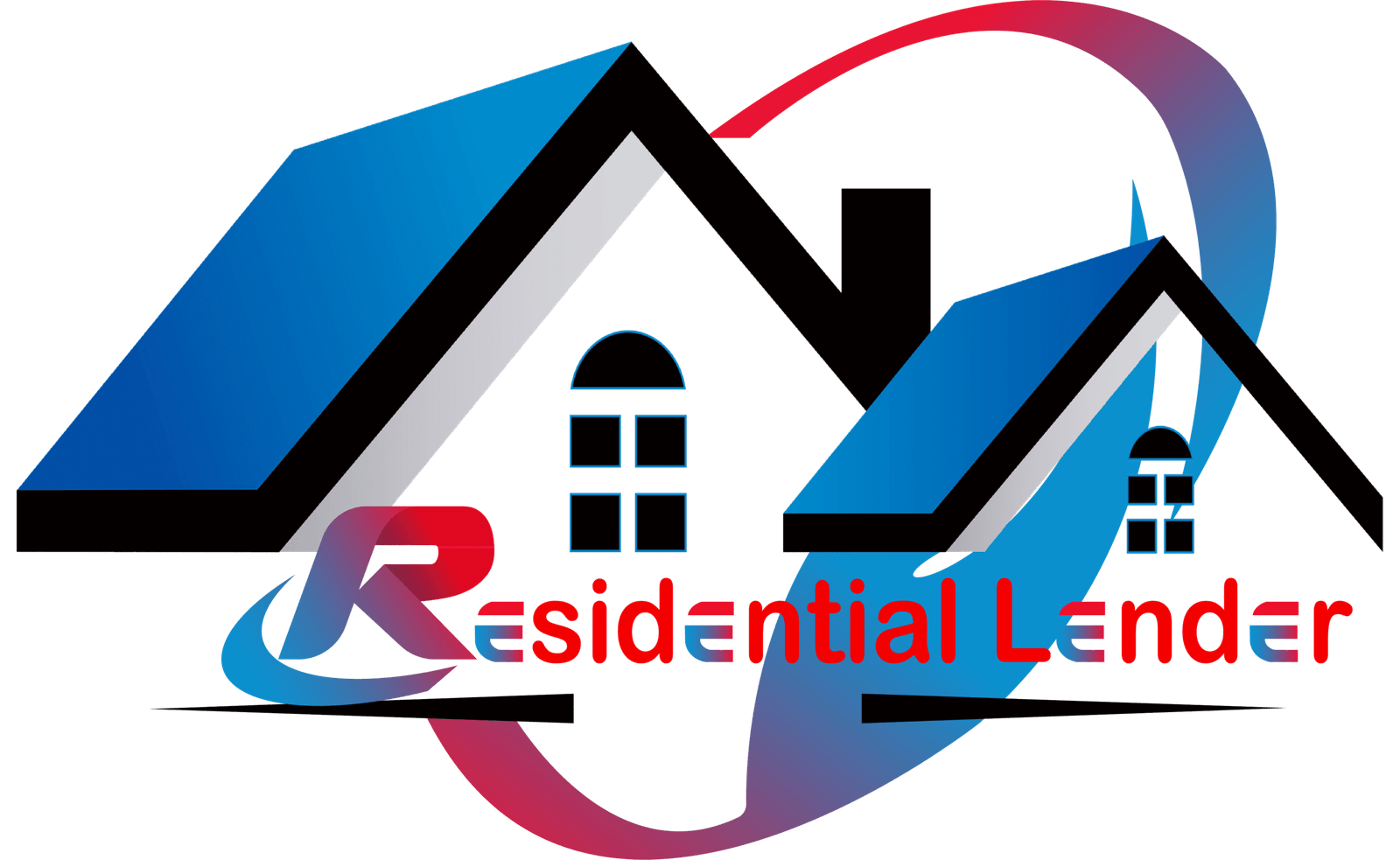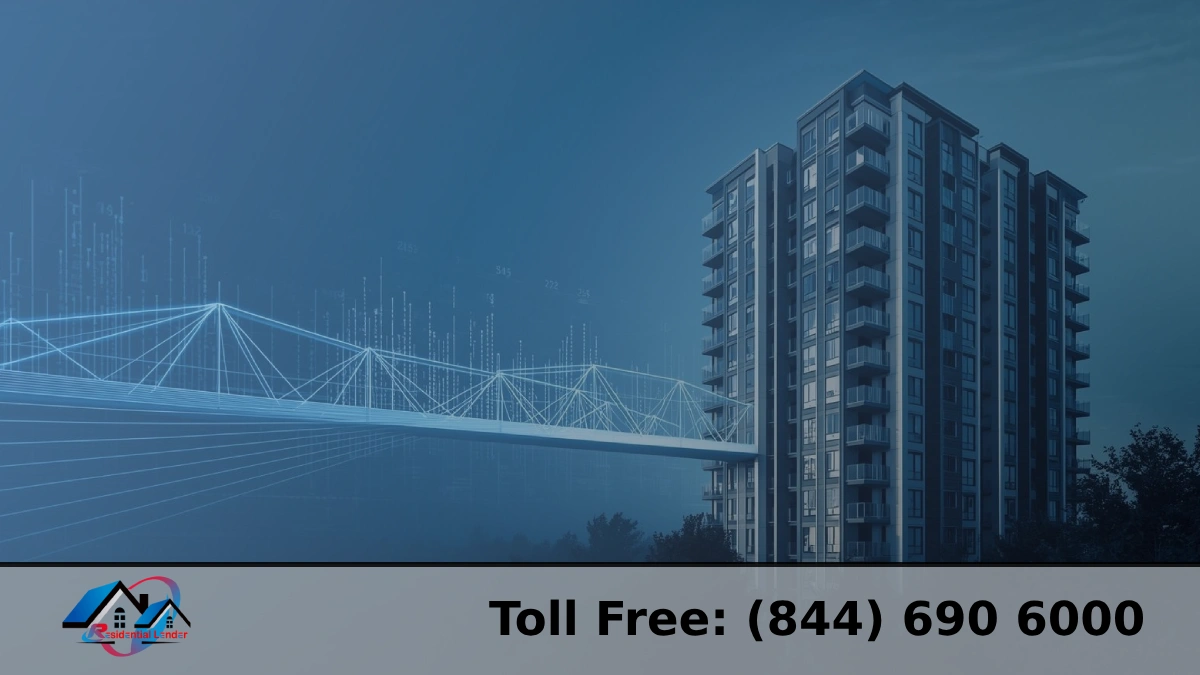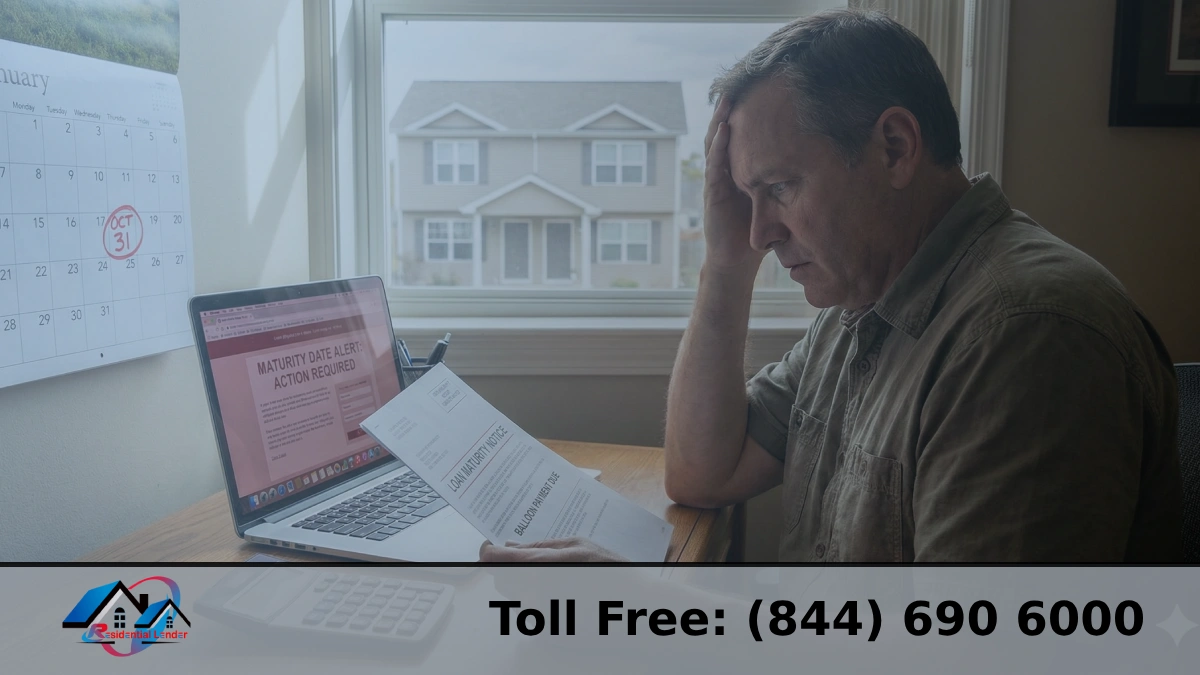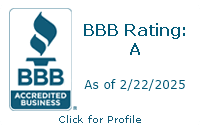Want to buy a house as an investment or have a home made just for you? Innovative financing is often the first step on the way from a plan to a reality. In this situation, a long-term construction loan is beneficial.
There is a special type of loan called a long-term construction loan that can cover the entire cost of building a new home, from purchasing the land to completing the building. In stages, it provides you with the necessary funds, ensuring you have sufficient resources as each part of your job progresses.
But is it hard to understand? How do I get one? How do I repay this? These are typical concerns that can make the thought of building seem daunting. We aim to demystify the process by addressing these concerns.
We have extensive knowledge of real estate lending, particularly in the realm of residential investment properties, here at Residential Lender. You will learn everything you need to know about long-term construction loans in this guide. This will help you turn your idea into a real, valuable asset.
What Exactly is a Long-Term Construction Loan?
Long-term construction loans are a specialized type of loan that can be used to finance the entire process of building a new structure from the ground up. You can obtain a standard mortgage to finance a house that has already been built. A construction loan, on the other hand, provides funds specifically for the various stages of building. This includes purchasing the land, obtaining the necessary permits, constructing the foundation, erecting the frame, and completing the interior and exterior finishes.
The word “long-term” is significant. This isn’t just to pay for the building; it’s often faster to switch to a fixed mortgage after the building is done. This combined method, usually referred to as a “construction-to-permanent loan,” streamlines the loan process by eliminating the need for two separate closings. With a “construction-only loan,” on the other hand, you would have to obtain new financing (like a traditional mortgage) once the building is completed, which could be more challenging and cost more.
Because these loans are readily available, many individuals and businesses utilize them. This group includes individuals who want to build their own forever homes, residential developers seeking to initiate new housing projects, and real estate owners looking to construct new houses for rent or sale. In any case, a long-term building loan is a crucial way to get the money you need to turn your design ideas into properties that you will love, or that will make you money.
How Does a Long-Term Construction Loan Work? A Step-by-Step Guide
It may seem complicated to figure out how to get a long-term construction loan, but breaking it down into clear steps makes the process much easier to understand. From the first application to the final turn into a permanent mortgage, it’s essential to know what to do at each step to ensure a successful build.
Phase 1: The Application and Approval Process
The process begins with a thorough application, which typically requires meticulous attention to detail. Lenders require a substantial amount of documentation to determine if your project is feasible and if you can afford it. This normally includes fully developed blueprints and architectural plans, a detailed budget for the building project that outlines all expected costs, and a realistic schedule for the project. Your financial health is also taken into consideration, along with the job details. Your credit score is significant because it indicates your likelihood of repaying debts on time and in full. In the same way, your debt-to-income ratio (DTI) is carefully checked to make sure you can easily pay back the new loan.
Lenders conduct thorough research and carefully assess the project’s viability, its market value upon completion, and its financial stability. This comprehensive review lowers the risk for everyone involved. As an underwriter with over 30 years of experience, we ensure that the evaluation process proceeds smoothly and efficiently. We can identify potential issues early on, which speeds up your path to approval.
Phase 2: Disbursing Funds During the Construction Phase
Once accepted, the process of paying for a construction loan differs significantly from that of a regular mortgage. The money is not given to you all at once; instead, it is spread out through a “draw” method. This means that the money is given in stages, or “draws,” as different parts of the building process are finished and checked. One draw could be given after the foundation is poured, another after the framing is done, and so on.
The lender’s primary risk-reduction strategy is this step-by-step method, which ensures that the funds are used exactly as planned and that the building project proceeds as planned. Furthermore, it benefits the customer by preventing them from overspending early in the project. During the building phase, you typically only pay interest on the amount that has been withdrawn, not on the entire loan amount that was accepted. This improves your current financial situation while the building is underway.
Phase 3: Transitioning to a Permanent Mortgage
At this point, the construction loan starts to live up to its “long-term” promise. This is what a lot of people want: “construction-to-permanent financing.” This format is beneficial because it allows for a single loan closing and a smooth change from a construction loan with interest-only payments to a regular mortgage with payments once the home gets its certificate of occupancy. This unified method simplifies the process by eliminating the need to pay for additional closing costs, appraisals, and underwriting fees, which would be required if you were to obtain a separate permanent mortgage.
If you chose a “construction-only loan,” on the other hand, you would need to get a different permanent mortgage once the building is done. It takes a new application, the underwriting process, and the close to complete this. Your monthly payments will transition from interest-only draws to principal and interest payments, spread out over the loan term, similar to a standard home loan, once the loan converts into a permanent mortgage. This can happen immediately with construction-to-permanent financing or through a new loan.
Finding the Right Type of Loan for Your Residential Investment Property
Find the best long-term construction loan if you want to build a house as a business. The plan is just as important. There are various types of loan arrangements available, allowing everyone to find one that suits their needs and budget. These systems change everything, from how responsible you are to how fast you get your money.
Understanding Different Loan Structures:
- Construction-to-Permanent Loan: Most people build their homes this way, which is also the most convenient option. It combines the construction loan with the permanent mortgage that follows into one loan, which is typically paid off all at once. Most of the time, you only pay interest on the money borrowed during the building phase. Once the building is completed and proof of occupancy is provided, the loan converts into a standard mortgage with regular payments. Most of the time, the interest rate stays the same, but it can change over time. With this plan, it’s easier to go through and costs less.
- Construction-Only Loan: This loan is specifically designed for the duration of the construction project, as its name suggests. The loan must be repaid upon completion of the project. For this reason, you will need to obtain a new, long-term mortgage (also referred to as “take-out financing”) to repay the car loan. It gives you more choices, but there are two sets of closing costs, and the interest rates on the mortgage and the building loan can change as the market does.
Specialized Long-Term Options for Residential Investment Properties:
Besides the basic structures, there are also loan products that are tailored to the specific needs of real estate investors:
- DSCR Loans (Debt Service Coverage Ratio Loans): Real estate owners, particularly those seeking to generate income from renting out their properties, are increasingly interested in these loans. Traditional loans closely examine your debt-to-income (DTI) ratio, whereas DSCR loans focus on the property’s expected cash flow to ensure it can cover the mortgage payments. This is ideal for owners who own more than one property or have non-traditional income streams and may not qualify for conventional loans due to their high personal debt-to-income ratio (DTI).
- SBA Loans & USDA B&I Loans: Small Business Administration (SBA) loans, like the SBA 504 loan and USDA Business & Industry (B&I) loans, are primarily for businesses, but they can be used for some types of residential investment or mixed-use properties, especially ones that help rural areas grow or create jobs. They typically offer more favorable terms and more extended repayment periods.
- FHA Commercial Property Investment Loans: It’s essential to note that standard FHA loans are typically for homes where the borrower resides. However, the FHA does offer some programs, such as Section 221(d)(4), which can assist business real estate investors who are constructing apartment complexes or mixed-use buildings. These usually have rules regarding the number of units they can have and whether the owner plans to live in one of them.
- Bridge Loans & Hard Money Loans: These are usually short-term loans with high interest rates that are used to “bridge” a money gap. Skilled investors can help you quickly buy a house (for example, as part of a fix-and-flip plan) or pay for immediate construction costs until you can get a more traditional long-term building loan or permanent financing. They are based on the value of the property rather than the borrower’s credit score.
- No-Doc Loans & Lite-Doc Loans: The fewer documents required for these loans, which are sometimes called “stated income” or “bank statement loans,” make them especially appealing to individuals who are self-employed or have complex financial situations. However, because the loan is taking on more risk, they usually charge higher interest rates and require a big down payment.
- Stated Income Loans: True “no-doc” loans for individuals with poor credit disappeared after the 2008 financial crisis, but new versions are now available for self-employed individuals or those with non-traditional sources of income. For these loans, income is measured in various ways, such as by reviewing bank records rather than tax returns or W-2s.
With these numerous choices, real estate investors can build or purchase a wide range of rental homes, including single-family homes for rent, fix-and-flip projects, fix-and-hold strategies, mixed-use developments, multifamily units, and other rental investment properties. This allows them to secure financing that aligns with their specific investment goals.
Key Considerations When Securing a Long-Term Construction Loan
To get a long-term building loan, you need to plan ahead and fully understand the process. Aside from just applying, there are a few essential things that will significantly impact your chances of getting accepted and running your project effectively.
Financial Preparedness
Your financial health is essential. Lenders closely examine your credit score to determine if they believe you can repay the loan. A high score indicates that you are financially responsible and can lead to better interest rates and terms. Keeping a close eye on your debt-to-income (DTI) ratio is also very important. Lenders want to know that you don’t have a lot of other debt that would make it hard for you to make your new mortgage payments. Try to keep your DTI as low as you can.
For construction loans, the down payment is usually higher than for regular mortgages. It can range from 20% to 30% or even more, depending on the project’s complexity and the lender’s perceived risk. The lender is taking on less risk because the upfront equity is bigger. Also, it’s essential to include emergency funds in your budget. Unexpected costs often arise in construction, so setting aside an extra 10 to 15 percent of the total project cost can help keep the project on track and prevent the budget from becoming tight.
Project Planning and Documentation
If you plan a job well, you can get money for it. You can’t say enough about the importance of thorough plans and permits. This includes detailed blueprints, design drawings, site plans, and any necessary local building permits. It is also essential to have a reasonable budget that covers all costs, including materials, labor, and unforeseen events. Lenders will carefully review these papers to determine if the project is feasible and to assess its value upon completion.
A qualified builder or contractor plays an equally important part. Most of the time, lenders prefer you to work with a licensed, experienced builder who has a good track record. Many people obtain loans due to their knowledge, reputation, and ability to adhere to budgets and deadlines.
Understanding Interest Rates and Payments
During the building phase, interest rates are often higher than those for a regular mortgage. This indicates that the lender is assuming more risk while the building is still under construction and has not yet generated revenue or fully guaranteed the loan. Most of the time, you will only pay interest on the money you have borrowed during this time, not the full loan amount.
Once the building is complete and the loan enters its permanent phase, full capital and interest payments begin to be made. For construction-to-permanent loans, locking in a rate early can provide significant peace of mind, as it eliminates the worry about interest rates increasing while the house is being built.
Overall, understanding these factors is crucial to ensure that the loan aligns with your project, covers all necessary costs, and fits within your budget and business objectives.
Why Choose The Residential Lender for Your Long-Term Construction Loan?
Residential Lender is the ideal company to work with if you require a long-term loan to develop a rental property. We are very flexible because we are both a table lender and a correspondent lender. This means we can offer a wide range of financial options that will work perfectly for your project. We’ve extensive knowledge of funding real estate, having insured properties for over 30 years. This means that the entire process, from application to completion, will proceed quickly and easily.
You can access funds from our extensive network of 200 private lenders and investors, which you won’t find anywhere else. You can find opportunities here that you can’t find anywhere else. Additionally, we facilitate collaboration among individuals through broker reference schemes that are both exclusive and non-exclusive. We lend money for a variety of rental homes. Among these are land, new buildings, fix-and-flip, fix-and-hold, and fix-and-rent homes as investments, as well as mixed-use, multifamily, and other types of rental properties. Let us help you reach your goals by using our skills.
Conclusion
Long-term construction loans are the foundation of both successful residential investment and custom home building. They offer staged funding that flows smoothly into permanent financing. They make it clear how to transition from the plan to a real thing, keeping costs down and risk to a minimum throughout the entire building process.
You can count on Residential Lender to be more than just a lender; we’ll work with you to reach your long-term real estate business goals. With decades of knowledge and a deep understanding of the market, we ensure you receive the best and most efficient financing options.
Ready to turn your residential investment dreams into reality? Contact Residential Lender today for a personalized financial consultation. With 30 years of underwriting expertise and an extensive network of 200 private lenders and investors, we are ready to help you secure the ideal long-term construction loan for your project. Let’s discuss how we can help you build your future in real estate.
Visit our website or call us directly to get started!
FAQs
Do construction loans cover the design phase?
No, the design phase (architectural plans, etc.) is typically self-financed before applying for the loan.
Can I use excess construction loan funds for home furnishings?
No, construction loan funds are paid directly to the builder for approved construction costs, not for furnishings.
Is a construction loan harder to get than a traditional mortgage?
Yes, construction loans generally involve more paperwork, higher down payments, and higher interest rates due to the increased risk for the lender before the home is built.
What happens if my home construction takes longer than planned?
Delays exceeding the loan’s terms can lead to penalties and/or higher interest rates.
Can I be my own builder with a construction loan?
Most lenders will only work with a licensed, insured, and experienced builder that they’ve checked out and accepted. However, the rules can vary depending on your location.








